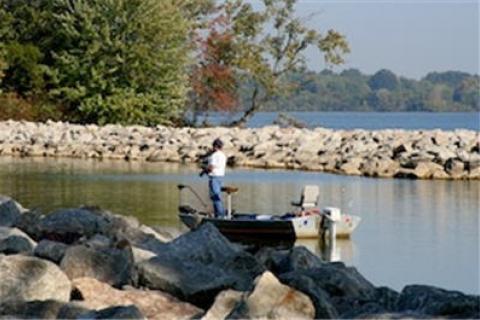
In the United States alone, 1,154 native fish species can be found. This being said, many anglers tend to focus all of their fishing attention on one or two species, often forgetting about what their local lakes and reservoirs have to offer. In the Southern part of the U.S., bass fishing is definitely king, with crappie fishing a close second. Crappie and bass definitely take most of the attention.
What I like about angling for different species is the numerous challenges that they bring along with them. By challenging yourself with different species, you will grow as an overall angler and gain a better understanding of how the entire ecosystem works in your local lake, river or reservoir.
Catfish
The catfish is a species that is probably third in popularity behind the crappie and bass. While they are fairly popular, many people consider them to be "trash fish" or bottom feeders. In many cases that is not true. In any southern water system, you will find a variety of catfish species such as channel catfish, blue catfish and flathead catfish. While they are all in the same family, they behave differently from one another.
The channel catfish is the most abundant in the U.S. They are extremely tough fish and can survive in extremely low water qualities, meaning you can find them in just about any pond, lake, creek or river you can think of. They are great to eat and will also put up a very strong fight. Channel catfish are generally the species you are eating when you go to a restaurant, and the fish are often farm raised for this purpose. They can be caught on anything from earthworms to nightcrawlers, minnows to cut bream, and chicken livers. They also have a great sense of smell, making them very vulnerable to stink baits.
Channel catfish spend almost all of their time on or near the bottom, making a heavy weighted rig the best. If you are a bass fisherman, you probably know about the Carolina Rig; a slightly modified version of this is a perfect rig for channel catfish as well. The rig starts by sliding a Bass Pro Shops Egg Sinker on your line. The weight of you sinker should be determined by three factors: the depth you are fishing, the amount of wind you are facing and also if there is current. For ponds and small lakes, a 1/4- to 1/2-oz. should be plenty. In bigger rivers or reservoirs, it might be necessary to use up to a 4-oz. weight in order to keep the bait down on the bottom. Once you have you sinker in place, you attach a swivel, followed by a short 12- to 24-inch leader and your hook of choice. Twenty-lb. test Bass Pro Shops Excel Monofilament will work great for this, and a Gamakatsu Octopus Hook in a size 1 to 1/0 is perfect for most situations. Channel catfish are rarely caught over 25 pounds, with most from the 1- to 6-pound range, making them perfect size for the fryer.
The bigger species in the catfish family are the flathead catfish and the blue catfish. The world record flathead catfish weighed in at an incredible 123 lbs., and they are commonly caught from 10 to 30 lbs. The world record blue is 109.25 lbs. and are normally pretty big when you catch them.
Unlike the channel cat, flatheads and blues are predators. They eat all sorts of aquatic animals, such as bass, bream, crappie, shad, crawfish and even other catfish. For these catfish, I recommend using fresh cut fish as well as live bait, fished on the bottom with the same Carolina-type rig you would use for channel cats, just with heavier weights and bigger hooks. Make sure you use heavy line as well because these fish are extremely strong and have incredible stamina, putting up a strong fight for a long period of time. I would suggest a heavy baitcasting combo such as the Bill Dance Catfish Baitcast Rod and Reel Combo in the 9- or 10-foot model. These will give you the strength you need to handle a true fish of a lifetime. So if you want to search of something new on your local body of water, the catfish has a ton to offer.
Gar Fishing
But probably the most overlooked fish is the gar. There are three species of gar. The longnose, the spotted and the alligator. Gar are generally considered to be trash fish, but trust me, they are a lot of fun to catch. While the longnose are normally 1 to 3 feet long, the alligator gar can grow up to 10 feet in length. The smaller species are much more common and can be found in many different lakes and river systems. Some of their main characteristics are their sharp, needle-like teeth and their extremely bony head and mouth.
This poses a slight problem for hooking them with congenial fishing hooks. One of the best ways to catch a gar is with a small 1- to 3-inch piece of frayed rope. While the mouth is almost impossible to penetrate, the rope will tangle in the teeth and allow you to bring them to the boat. Gar normally feed off the surface, so no weight is the way to go. This can be difficult for spinning equipment, so what I like to do is fly fish for them. Fly fishing allows you to cast a weightless bait long distances and also creates a great challenge when fighting a strong jumping gar. Give it a try, and you will be hooked on what it has to offer.
All of your angling needs can be found at Bass Pro Shops, and make sure to ask an associate if you have any questions!
I'll see you on the water!
By Joey Nania
- 5093 views

